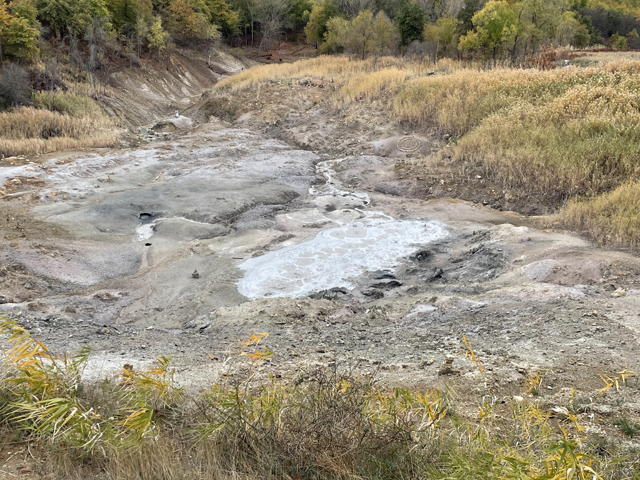28 February 2023–At one of the world’s largest emission fields of non-volcanic carbon dioxide in southern Italy, researchers have detected a complex variety of seismic tremor signals, captured by a seismic array deployed in the region in the summer of 2021.
In their study published in the Bulletin of the Seismological Society of America, Danilo Galluzzo of the Istituto Nazionale di Geofisica e Vulcanologia and colleagues describe three main types of seismic tremor signals over a range of frequencies at the Mefite d’Ansanto gas field.
The analysis could help researchers learn more about the source of the tremor, as well as how the fluid and gas traveling through the area could affect seismic activity along the southern Apennines mountain range.
Several strong earthquakes have occurred in the region, the latest being a magnitude 6.9 event in 1980 that was located 25 kilometers southeast of Mefite.
At this point, “it is not straightforward to establish whether there could be a link between a particular type of tremor and the seismicity of the area,” Galluzzo said. “A larger dataset should be collected and further analyses should be performed.”
The main gas emission field at Mefite is a roughly circular area of nearly 100 meters, with its most active vent appearing at the surface as a pond of bubbling mud. A wedge of the mantle buried deep below this part of the Apennines is forcing hot hydrothermal fluids upward through shallower layers of limestone and clay sediments where it meets a reservoir of trapped carbon dioxide. Faults and fractures in the buried rock provide pathways for the gas to reach the surface.

The unusual geologic feature has a distinctive sulfurous smell, and the sound of the degassing can be heard from hundreds of meters away. Named after the ancient Italic goddess Mefitis, Mefite was mentioned in Virgil’s Aeneid as a passage between the earth and the underworld.
The 2021 seismic array was deployed as part of a larger project called FURTHER (Fluids in the Preparatory Phase of Earthquakes in Southern Apennines), said Galluzzo, “which aims to study the role of fluids in the seismogenic process in the southern Apennines.”
In the data collected by the array, the researchers found a persistent low frequency (1.5 -3 Hertz) tremor, a persistent intermediate frequency (3-20 Hertz) tremor with sudden variations in strength, and very high frequency tremor pulses lasting tenths of a second each. The first two types of tremor have shallow sources and are composed of surface waves. The third pulsing type of tremor is a body wave that probably originates 50 to 100 meters below the surface, Galluzzo and colleagues said.
The low frequency persistent tremor may be related to fluid discharge throughout rock conduits to the surface, they note, while the intermediate signal may be related to changes in flow velocities between gas and liquids near the surface, creating a geyser-like effect.
The high frequency pulses create a signal like a drumbeat or a heartbeat, and are similar to seismic recordings from mud volcanoes, the researchers conclude.
Galluzzo said the researchers have plans in the near future to perform similar seismic experiments “to better understand the underground beneath Mefite and in the particular the source of the tremor.”
